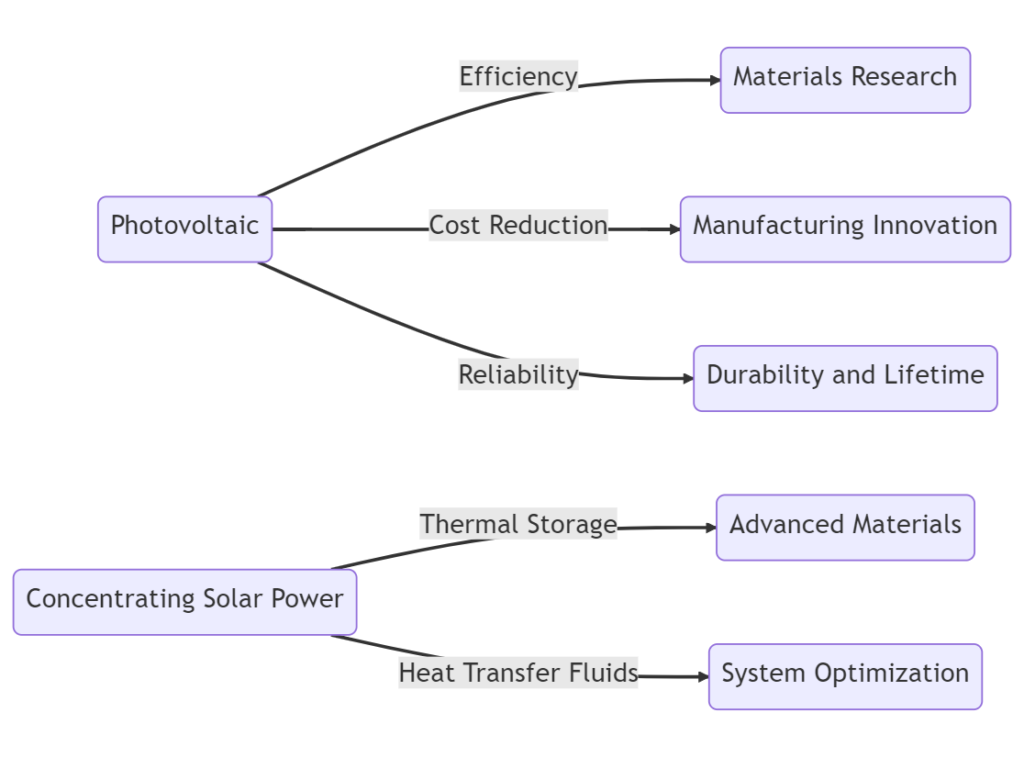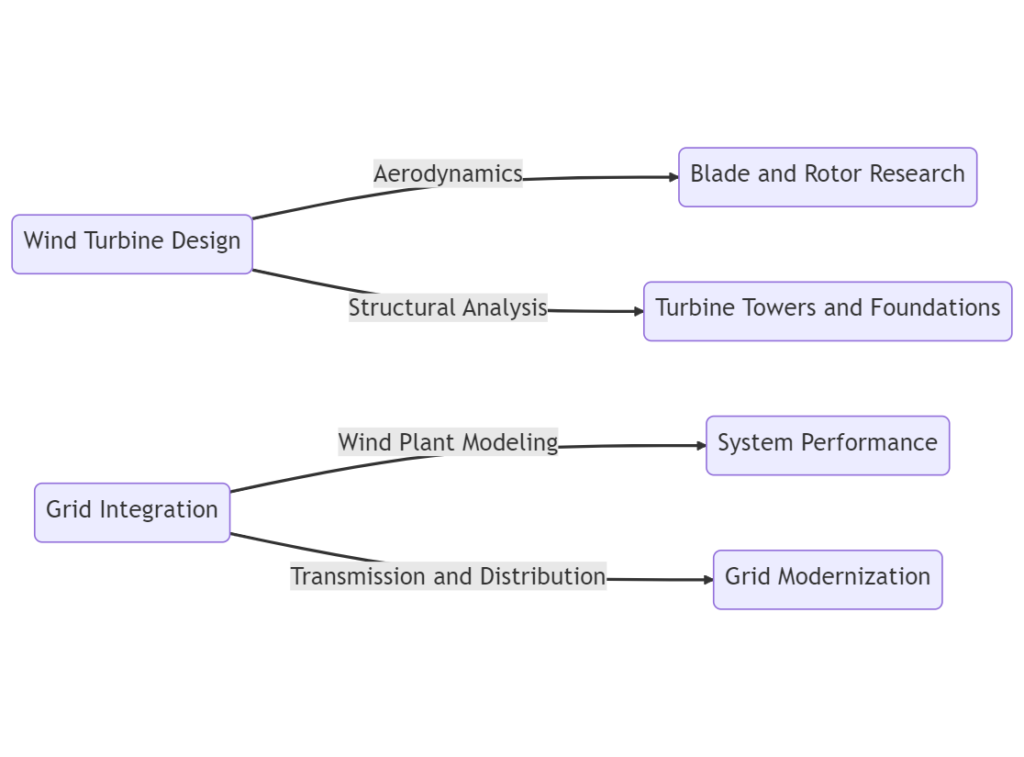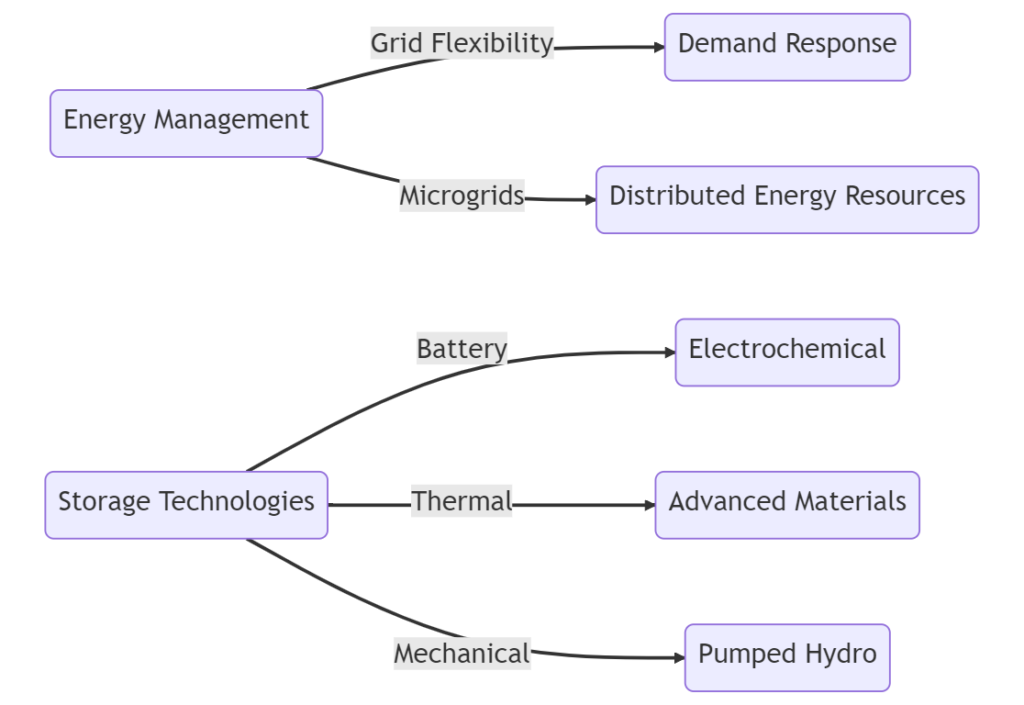Setting the Stage for Renewable Energy
The National Renewable Energy Laboratory (NREL) is at the forefront of research and innovation in the clean energy sector. NREL aims to promote renewable energy and energy efficiency. They work tirelessly for a sustainable future. This article explores NREL’s research areas, achievements, and the value of collaboration in renewables.
NREL’s Research Areas: A Diverse Portfolio for a Sustainable World
Solar Energy: Harnessing the Power of the Sun
NREL’s solar energy research focuses on developing cutting-edge photovoltaic (PV) and concentrating solar power (CSP) technologies. With an emphasis on improving efficiency, reducing costs, and ensuring reliability, NREL’s solar energy innovations are paving the way for a more sustainable future.

Wind Energy: Capturing the Breeze for a Cleaner Tomorrow
National Renewable Energy Laboratory’s wind energy research aims to enhance the performance and lower the cost of wind power systems. By developing advanced technologies for wind turbine design, modeling, and grid integration, NREL is driving progress in the wind energy sector.

Energy Systems Integration: Building a Resilient and Flexible Grid
NREL’s energy systems integration research focuses on optimizing the interaction between various energy sources, storage systems, and the electrical grid. By designing and implementing advanced control strategies, NREL is shaping the future of our integrated energy systems.

Major Accomplishments: Driving Innovation and Impact
Setting New Records in Solar Cell Efficiency
NREL has been a pioneer in developing high-efficiency solar cells, breaking multiple world records for both PV and CSP technologies. NREL’s research has led to the development of multi-junction solar cells with efficiencies exceeding 40%, setting a new benchmark for solar power generation.
Advancing Wind Turbine Performance
NREL’s work in wind energy has resulted in significant improvements in wind turbine design and performance. By developing advanced rotor designs and innovative control strategies, NREL has contributed to the increased efficiency and cost-effectiveness of wind energy systems.
Implementing Grid-Scale Energy Storage Solutions
National Renewable Energy Laboratory’s energy storage research has led to the development of grid-scale solutions, such as advanced flow batteries and pumped hydro storage systems. These technologies enable better integration of renewable energy sources into the grid, enhancing its stability and resilience.
Collaborative Efforts: Building a Clean Energy Ecosystem
NREL’s success in renewables comes from its focus on collaboration. They work with industry, academia, and other labs to build a strong clean energy ecosystem. This accelerates the shift to a sustainable future.
Public-Private Partnerships: Accelerating Technology Commercialization
National Renewable Energy Laboratorycollaborates with private companies through various partnership models, such as Cooperative Research and Development Agreements (CRADAs) and Technology Partnership Agreements (TPAs). These partnerships help bridge the gap between research and commercialization, allowing for the rapid deployment of innovative clean energy technologies.
Academic Collaboration: Cultivating the Next Generation of Innovators
NREL partners with universities and research institutions for expertise and talent. They join research projects, share facilities, and offer education. This cultivates future renewable energy experts and professionals.
International Cooperation: Tackling Global Energy Challenges
Recognizing the global nature of energy challenges, NREL actively participates in international collaborations. By sharing knowledge, expertise, and best practices with counterparts around the world, NREL contributes to the development and deployment of clean energy technologies on a global scale.
Conclusion: The Path Forward for Renewable Energy
The National Renewable Energy Laboratory plays a pivotal role in shaping the future of renewable energy and energy efficiency technologies. Through its diverse research portfolio, groundbreaking innovations, and collaborative efforts, NREL is driving progress in the clean energy sector and contributing to a more sustainable world. As the demand for clean energy continues to grow, NREL’s ongoing commitment to research and innovation will remain essential in building a resilient, efficient, and environmentally-friendly energy landscape.
FAQs
Q: What happens at the National Renewable Energy Laboratory?
A: The National Renewable Energy Laboratory (NREL) is a research facility that focuses on renewable energy and energy efficiency research and development. It conducts research in areas such as solar, wind, and bioenergy, as well as energy storage and grid integration.
Q: Who runs the National Renewable Energy Laboratory?
A: The National Renewable Energy Laboratory is a government-owned, contractor-operated facility that is managed and operated by the Alliance for Sustainable Energy, LLC, which is a partnership between MRIGlobal and Battelle.
Q: How many people are employed at NREL?
A: As of 2021, the National Renewable Energy Laboratory has approximately 2,800 employees, including scientists, engineers, researchers, and support staff.
Q: What is the National Institute of renewable energy?
A: There is no specific entity called the National Institute of Renewable Energy. However, many countries have government agencies or research organizations that focus on renewable energy research and development, such as the National Renewable Energy Laboratory in the United States, the National Institute of Advanced Industrial Science and Technology in Japan, and the Fraunhofer Institute for Solar Energy Systems in Germany.
Q: What is an international renewable energy certificate?
A: An international renewable energy certificate (I-REC) is a market-based instrument that tracks and verifies the generation of renewable energy. It allows companies and organizations to purchase renewable energy certificates that represent the environmental and social benefits of renewable energy generation, even if they are not physically located in the same region as the renewable energy project.
Q: Which country has the largest renewable energy program?
A: China has the largest renewable energy program in the world in terms of installed capacity. The country has invested heavily in renewable energy over the past decade and has become a global leader in solar and wind energy.
Q: Which country consumes 100% renewable energy?
A: No country currently consumes 100% renewable energy. However, several countries are close to achieving this goal, including Iceland, which gets almost 100% of its electricity from renewable sources, and Costa Rica, which has gone for several months at a time on 100% renewable energy.
Q: What are the top three countries in renewable energy?
A: The top three countries in renewable energy are China, the United States, and Brasil. These countries have the largest installed capacity of renewable energy in the world.
Q: Who is the largest renewable company in the world?
A: The largest renewable energy company in the world is NextEra Energy, Inc., which is a state-owned enterprise that focuses on renewable energy development and generation.
Q: Who is the biggest renewable energy producer in Europe?
A: The biggest renewable energy producer in Europe is Enel Green Power, which is a subsidiary of the Italian energy company Enel. Enel Green Power focuses on the development and generation of renewable energy across Europe and the world.